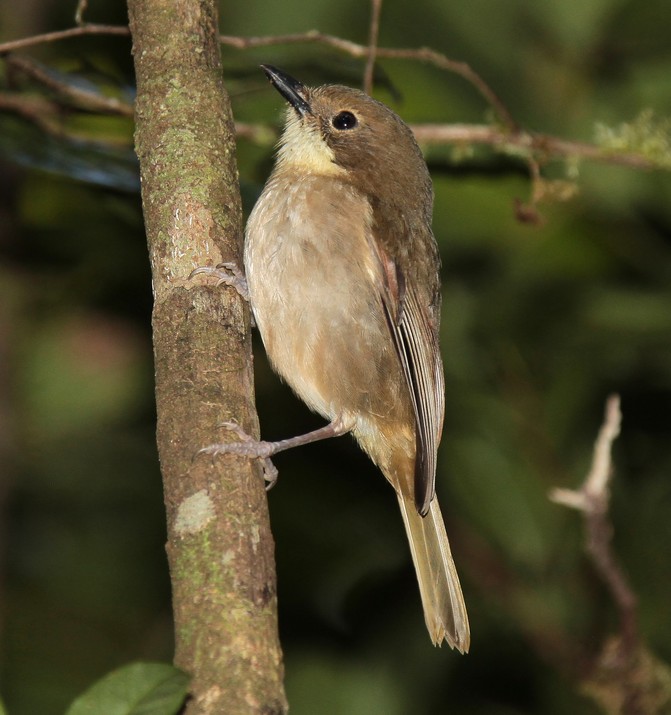PACHYCEPHALA CALEDONICA - (GMELIN, 1788)
Description Générale
Le genre Pachycephala comprend des espèces d'oiseaux appartenant à la famille des Pachycephalidae. Taille: 15cm. Le mâle a le ventre roux, la gorge blanche avec un collier noir et le reste du corps gris. La femelle a la gorge blanche sans collier et le reste du corps est gris. Les jeunes ressemblent à la femelle.
Habitat
Forêt dense uniquement.
Reproduction
Septembre, Octobre, Novembre, Décembre et Janvier. 1 oeuf (7%) ; 2 oeufs (73%) ; 3 oeufs (20%). Couleur des oeufs : blanc tacheté de marron. Durée d'incubation : 16 à 17 jours. Durée d'occupation du nid : 16 à 18 jours. Les deux adultes se relaient pour couver les oeufs et pour nourrir les jeunes. Durant l'incubation les relais ont lieu toutes les 15 à 30 minutes.
Alimentation
Insectes.
Nidification
Coupe grossière de brindilles, seulement coincé entre dans une fourche à deux ou trois branches. Il arrive qu'en cas de vent fort le nid se détache et tombe au sol avec la nichée. Hauteur du nid : moyenne 1,8m, maximum 4m, minimum 1m.
Particularité
Il est commun sur la Grande Terre et facilement observable.
----------------------------------
The Melanesian Whistler (Pachycephala caledonica) is a species of passerine bird in the whistler family Pachycephalidae. It is found in New Caledonia (including the main island, Isle of Pines and Loyalty Islands), Vanuatu, and Vanikoro in far southeastern Solomons. Alternatively, all except the nominate subspecies are treated as subspecies of the Golden Whistler. In that case, P. caledonica is known as the New Caledonian Whistler, and restricted to the main island of New Caledonia and the nearby Isle of Pines. In the past, even the nominate subspecies has been treated as a subspecies of the Golden Whistler. It inhabits humid forest, including degraded forest and forest edges, from sea level up to at least 900 metres (3,000 ft). They are relatively common in suitable habitat, particularly below 300 metres (980 ft), and are not considered threatened by the IUCN. The species is sedentary.
Description
The species is a medium sized whistler, typically around 14–16 centimetres (5.5–6.3 in) in length and weighing 18–25 grams (0.63–0.88 oz), though some subspecies are larger. In the nominate subspecies the male has a dark slate-grey crown, face and nape, a white throat, ochraceous-yellow belly and rump, and olive back and wings with a black line between the throat and belly. The legs are dark brown. Males of other subspecies share the white throat, but are less ochraceous below, and may –depending on the exact subspecies involved– have a far broader black band between the throat and belly, and a black or olive crown, face and nape. In the nominate subspecies the female is duller than the male with a buff belly and rump, no line between the throat and belly, and an olive-brown head, back and wings. The legs are lighter brown than in the male. Females of some other subspecies have a yellow belly, and a greyish, brownish or olive throat.
Ecology
The Melanesian Whistler feeds on insects, also taking snails and seeds. It feeds in thefoliage of trees and shrubs, and on the branches, presumably in a similar fashion to the closely related Golden Whistler. At least in New Caledonia, the breeding season for this species is from December to January. A small nest (6 cm in diameter) is built out of sticks and spider web and suspended from small branches above the ground. Two eggs, which are white and blotched with brown, are laid and incubated by both parents.
